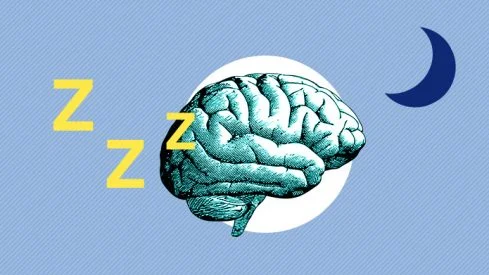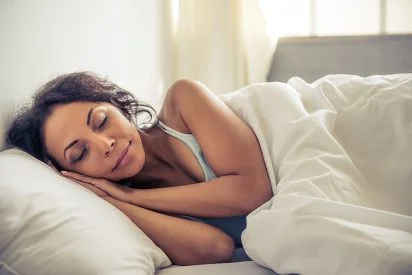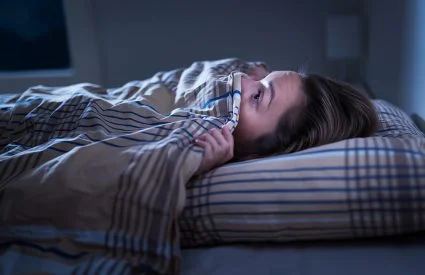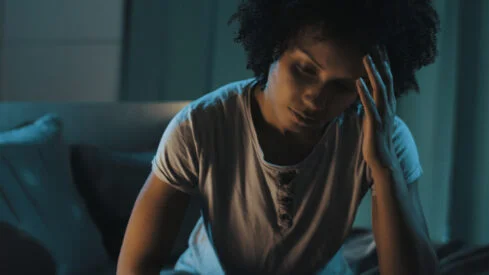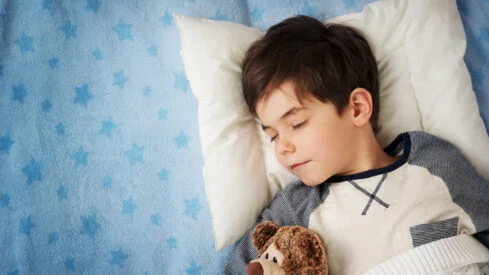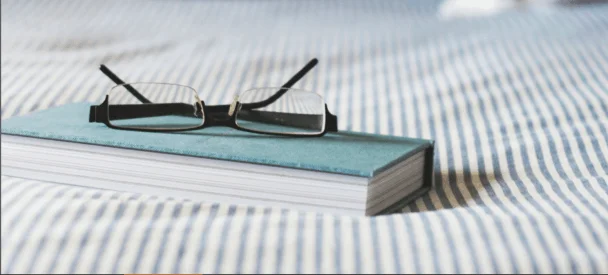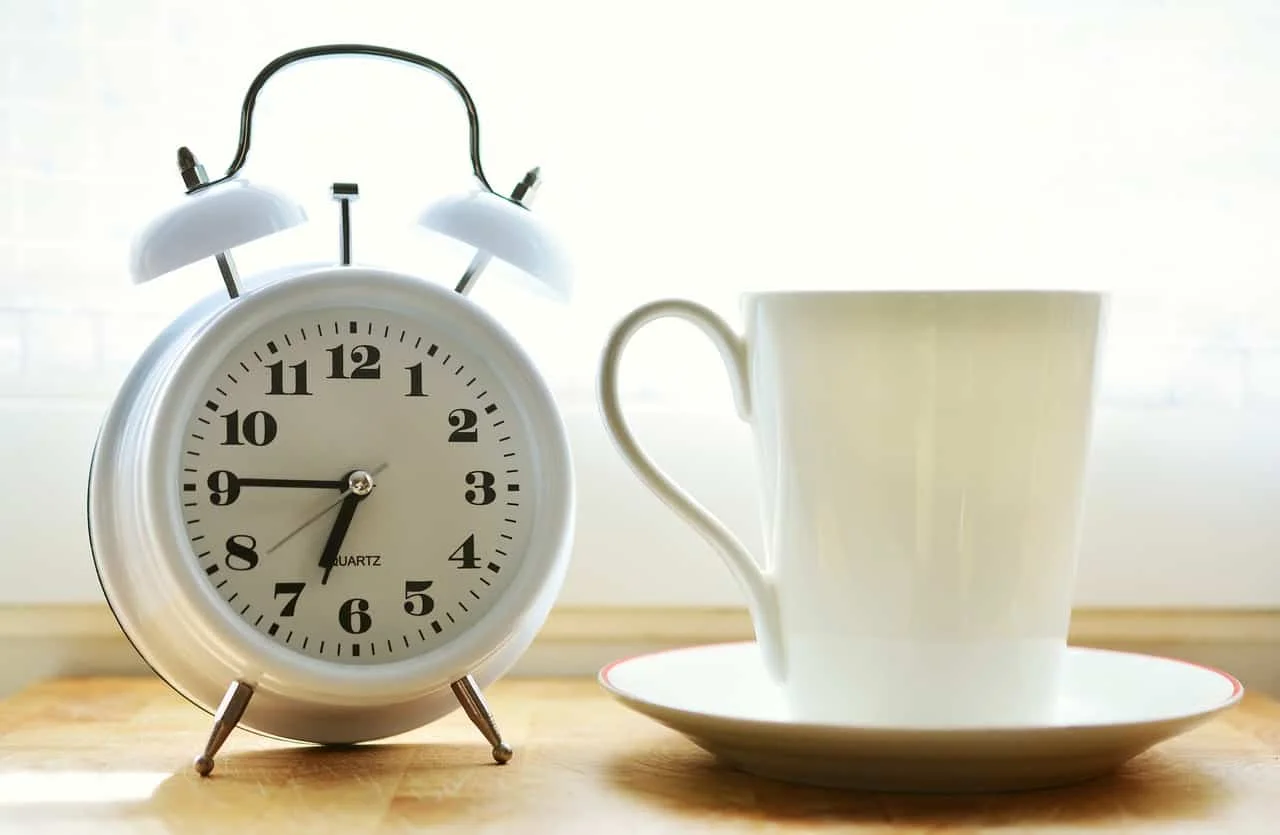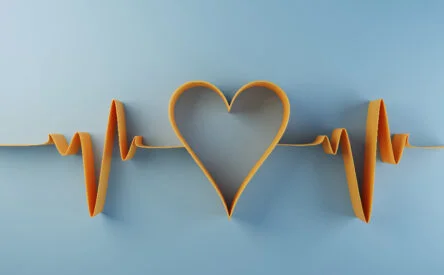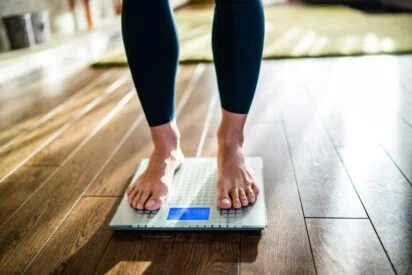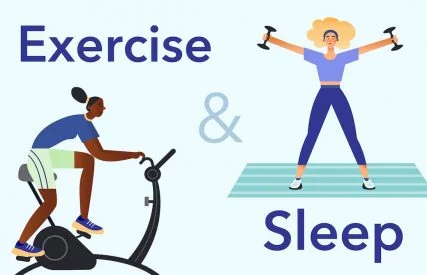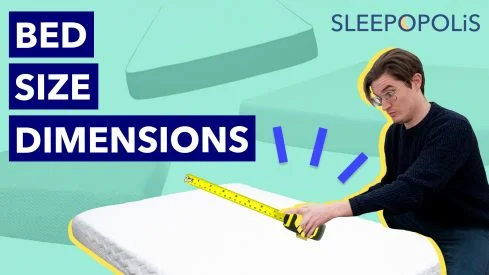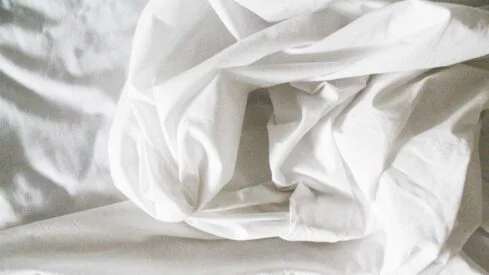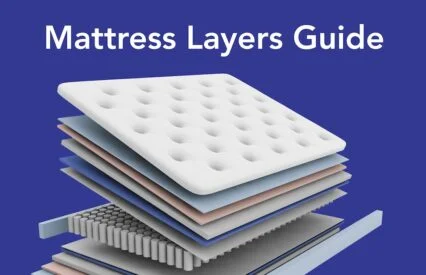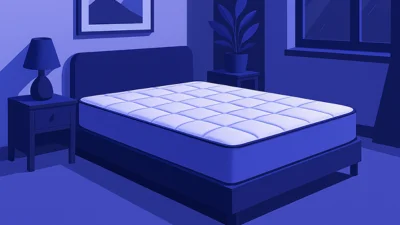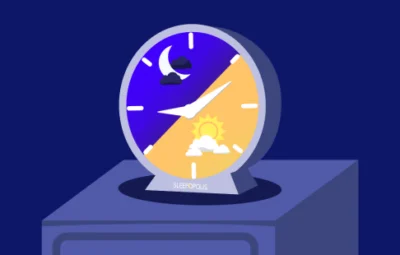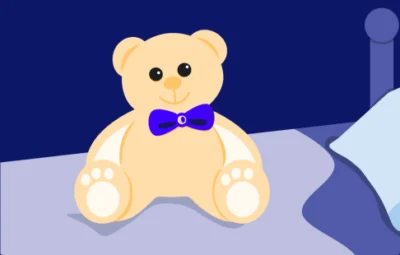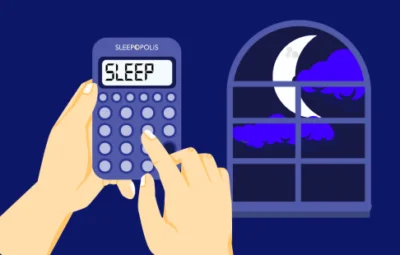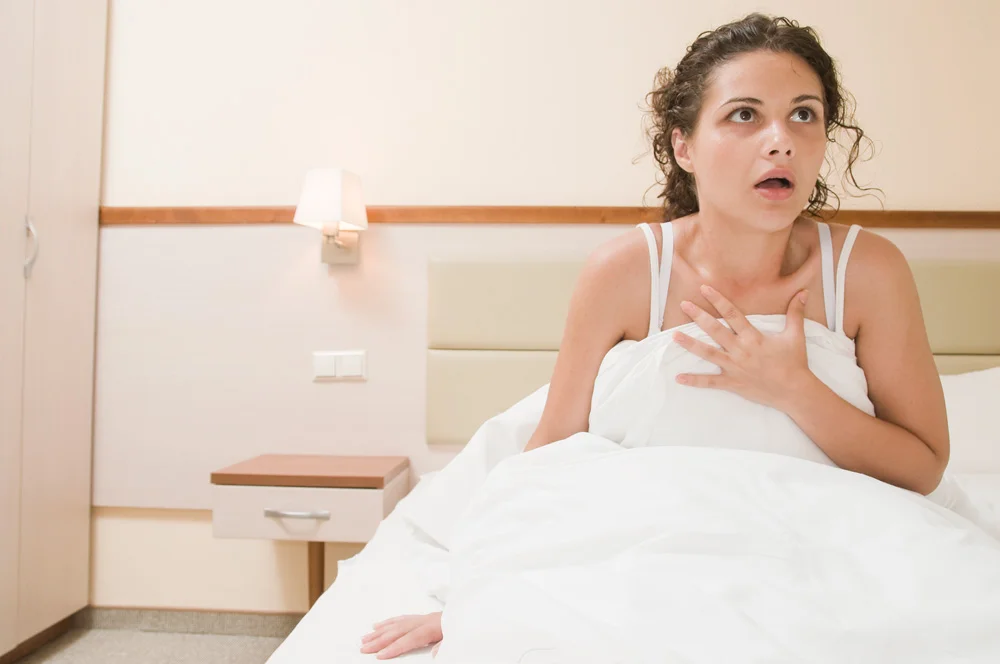
Long Story Short
- Hypnic jerks, also called sleep starts or hypnagogic jerks, are sudden muscle twitches that happen as you’re drifting off to sleep. (1)
- Hypnic jerks are very common, with up to 70 percent of adults experiencing them at least once in their lifetime. (2)
- Factors that might increase the likelihood of hypnic jerks include stress, anxiety, sleep deprivation, vigorous exercise, and excessive caffeine intake. (1)
- Improving sleep habits, minimizing caffeine intake, and reducing stress and anxiety can help prevent hypnic jerks. (3)
You’re this close to falling asleep when, out of nowhere, your body does this weird jump. If it’s happened to you, you’ve likely experienced a hypnic jerk. (3) These sudden, involuntary muscle twitches are quite common. In fact, about 70 percent of adults experience at least one hypnic jerk at some point in their lives. (2)
While they might leave you momentarily rattled, hypnic jerks are usually harmless. (1) But why do they happen, and is there a way to stop them? Stick around. We’re answering these questions and more.
Note: The content on Sleepopolis is meant to be informative in nature, but it shouldn’t be taken as medical advice, and it shouldn’t take the place of medical advice and supervision from a trained professional. If you feel you may be suffering from any sleep disorder or medical condition, please see your healthcare provider immediately.
What Are Hypnic Jerks?
Hypnic jerks are involuntary, random muscle contractions that happen just as you’re falling asleep. (3) The word “hypnic” refers to sleep, but these jerks also go by other names like “sleep starts” or “hypnagogic jerks.” When you experience a hypnic jerk, one minute, you’re dozing off, and the next, your body jolts unexpectedly.
Hypnic jerks seem to come from the brainstem, the same part of the brain that controls your startle reflex, Jane Dyonzak, Ph.D, a licensed clinical psychologist specializing in the treatment of sleep and behavioral medicine, tells Sleepopolis. (1) (4) This area is known as the reticular formation. (1) You can think of it as the brain’s control center because it coordinates many functions, including sleep, wakefulness, and attention. (5) When your body transitions from being awake to asleep, this system can get a bit unstable. This instability can send sudden signals down through your body, resulting in hypnic jerks. (1)
These muscle twitches can also trigger your autonomic nervous system, which controls automatic processes like heart rate and breathing. As a result, you might also experience: (1)
- A fast heart rate
- Faster breathing
- Sweating
This could explain why a hypnic jerk often feels like a shock or the sensation of falling. Your body gets briefly “activated” during what should be a calm transition to sleep. (1)
Another possible explanation for hypnic jerks, according to Dyonzak, is that when your muscles relax as you’re falling asleep, the brain can mistake this relaxation for falling and trigger a startle response to “catch” yourself, causing a sudden jerk.
What Causes Hypnic Jerks?
The short answer is we don’t know. Research on hypnic jerks is limited, leaving scientists unsure about what’s causing them. “While we don’t know the cause or causes of hypnic jerks, we know some of the risk factors that increase the likelihood of their occurrence,” Dyonzak explains. These risk factors include: (1) (2)
- Excessive caffeine intake: Caffeine can interfere with sleep, especially if you ingest it too late in the day. It can affect your brain’s natural sleep signals, keeping you more alert when you should be winding down. (6) This can make it harder to fall asleep and potentially trigger hypnic jerks as your body struggles to relax. Plus, caffeine too late in the day can leave you tossing and turning at bedtime and may increase the chances of waking up during the night. (7)
- Intense workouts before bed: While exercise can be great for sleep, vigorous activity timed too closely to bedtime could leave your body feeling more energized than relaxed. Experts often suggest wrapping up intense workouts at least 90 minutes before hitting the sheets. (8) Still, light to moderate-intensity exercises before bed can actually be helpful for sleep.
- Lack of sleep: Being sleep-deprived or sleeping off schedule can increase the chances of hypnic jerks, Dr. Alex Dimitriu, M.D. and double board-certified in psychiatry and sleep medicine, tells Sleepopolis. (9) When you’re short on sleep, your brain can have a hard time settling into a deep slumber, and you might be more likely to experience hypnic jerks during that wake-to-sleep transition. (9)
- Stress and anxiety: There’s no denying how tough it is to power down at night when your mind’s racing with worries. Stress and anxiety can keep your body on high alert, making it difficult to unwind and drift into sleep. (10) With stress and anxiety in the mix, your chances of experiencing those sudden muscle twitches during the transition to sleep can increase. (3)
- Medications: Some medications could be behind those startling sleep starts. For example, antidepressants like selective serotonin reuptake inhibitors (SSRIs) — including escitalopram (Lexapro), sertraline (Zoloft), and fluoxetine (Prozac) — can interfere with your brain’s sleep-wake signals and have been linked to hypnic jerks. (2) That said, even if you think your medication is causing hypnic jerks, talk to your healthcare provider before making any changes.
Think of these risk factors as sleep saboteurs, Dyonzak suggests. All of them can affect the transition between wakefulness and sleep, making it harder for your body to relax, drift off, and stay asleep.
What Does a Hypnic Jerk Feel Like?
Hypnic jerks can feel quite different for everyone. Many people describe them as a sudden jolt that affects the entire body, although your arms and legs are more likely to twitch during a hypnic jerk. (3) They can vary from mild interruptions that barely affect your sleep to more intense muscle contractions. People may also feel a falling sensation. Chelsea Perry, DMD and owner of Sleep Solutions, tells Sleepopolis that hypnic jerks can be surprising enough to jolt you awake and leave you feeling momentarily disoriented.
They often come hand-in-hand with hypnagogic hallucinations, which are those vivid dreams or strange visions that pop up just as you’re drifting off, Perry adds. (2) “Both happen during the transition into sleep, when brain activity is still high, causing vivid dreams and muscle twitches to mix,” she explains.
Some people report unusual sensations, like seeing flashing lights or hearing crackling, banging, or clapping noises. (3) Fortunately, hypnic jerks are usually painless and primarily involve those surprise twitching sensations.
Can You Die From a Hypnic Jerk?
Simply put, no. Hypnic jerks may be startling, but they’re a normal part of the sleep process, are common and usually don’t need treatment. (3)
They don’t involve or affect the heart, and there’s no documentation of hypnic jerks resulting in any direct harm to the body, Donzyak points out. Except, of course, if you accidentally elbow your sleeping partner or bump into the side of the bed during one of those sudden jolts. (3) But if these muscle twitches are keeping you awake, there are ways to address that, which we’ll discuss next. (1)
How to Stop Hypnic Jerks: Practical Tips
You may not be able to stop hypnic jerks instantly, but some small changes can help reduce their frequency. (3)
Practice Good Sleep Hygiene
It doesn’t have to be overwhelming. Good sleep hygiene is about creating habits that welcome better sleep and hopefully keep those annoying hypnic jerks at bay.
Here’s what practicing good sleep hygiene might look like: (11) (12)
- Stick to a sleep schedule: Try to go to bed and wake up at the same time every day, even on weekends. Setting an alarm for bedtime, not just for waking up, can help.
- Create a bedtime routine: Give yourself cues that it’s time for sleep by developing a pre-bed routine. This can be as simple as showering, brushing your teeth, putting on your pajamas, and reading. (13)
- Make your bedroom a haven for sleep: Keep it dark (blackout curtains can be your best ally here!), quiet, and cool at about 60 to 70 degrees Fahrenheit. And don’t underestimate the power of comfort, like the best mattress and bedding, which can make all the difference in your sleep.
- Ditch the screens before bed: Easier said than done, we know. But the blue light from those glowing rectangles is not doing your sleep any favors. Try to unplug at least an hour before bed. (14)
- Get enough sleep: Make sure you are sleeping enough consistently. That’s seven or more hours for most adults, Dimitriu notes. (15)
Reduce Stress and Anxiety
We talked about how stress and anxiety can increase the risk of experiencing hypnic jerks. So, finding ways to reduce them might just make those nighttime jumps a thing of the past.
Have you tried meditation or breathing exercises? Even just a few minutes of these activities can do wonders for your mind. And if you prefer moving your body, light yoga or tai chi might be just the ticket. (16) (17)
If you enjoy writing, taking a moment to jot down your thoughts in a journal can help clear your mind of the day’s clutter. (18) And let’s not forget the power of a warm bath — it’s so much more than cleanliness. That cozy feeling afterward can be the perfect cue for winding down. The idea is to find what helps you relax and calm your nervous system, which can lower the chance of a hypnic jerk, Perry says.
Exercise Daily
Regular exercise can help regulate your body’s sleep-wake cycle and can boost your overall mood, making it easier to drift off at night. (19)
However, timing is everything. While a good workout can leave you feeling great, hitting the gym too close to bedtime might make you more wired than ready for sleep. It can make it harder to wind down, potentially contributing to hypnic jerks. (19) So, plan to finish any intense workouts about 90 minutes before bed to give your body time to relax. (8)
Minimize Daily Caffeine Consumption
Caffeine is a beloved morning (and sometimes all day) booster. It might help kickstart your morning, but it might not be so kind to your sleep. This stimulant can hang around in your system longer than you think. It has a half-life of about 5 hours, which means half of that 2 p.m. cup of coffee is still in your system at 7 p.m. (20) That’s not ideal for a restful night. (1) (3)
So, how long before bed should you cut off caffeine to avoid the repercussions come bedtime? It varies by person, but a standard guideline is to stop 10 to 12 hours before bed. (7) If you plan to sleep at 10 p.m., make your last caffeinated drink around noon. Caffeine can come from surprising sources like chocolate, tea, and certain sodas, so keep an eye on those. (20)
How Can You Stop Hypnic Jerks Immediately?
You really can’t stop a hypnic jerk immediately, and here’s why. Once a hypnic jerk kicks in, it’s pretty much over by the time you realize it, Perry says. It’s really that sudden and brief. But focusing on deep breathing or relaxation can help calm the body afterward, especially if it woke you up, she adds.
When to See a Doctor
Hypnic jerks are usually harmless and just an annoying quirk of falling asleep, but there are times when they warrant a chat with a healthcare provider. Here’s when you might want to consider booking that appointment:
Frequent or severe hypnic jerks can lead to insomnia, according to Dyonzak. So, if these jolts or the anxiety around them are keeping you from getting a good night’s sleep, it’s time to seek professional help. (3) Your healthcare provider might ask you to keep a sleep diary to help them spot any patterns. Usually, no tests are needed to diagnose hypnic jerks, but if they’re severe, you might need to have a sleep study, also called polysomnography, to check for other sleep disorders like sleep apnea. (3)
And if your bed partner mentions you’ve been kicking or twitching in your sleep, you may be dealing with a sleep disorder, like periodic limb movements (PLMs). (21) Unlike hypnic jerks, PLMs can disrupt your sleep without you even realizing it, Donzyak says. If you’re having hypnic jerks along with involuntary muscle movements during the day (called myoclonus), it’s a clear sign to see a healthcare professional. (22)
FAQs
Why do I twitch in my sleep?
Twitching in your sleep can occur due to hypnic jerks, which are sudden muscle contractions that happen as you’re drifting off. (3) It’s a common experience and usually harmless. Other conditions like restless leg syndrome or periodic limb movements can also cause twitching or movement during sleep.
Why do I twitch when I sleep with someone else?
Sleeping next to someone can cause anxiety or make it harder to transition between wakefulness and sleep, Donzyak says. Sometimes, you’re simply more aware of your movements when there’s a bed partner, or the way you fall asleep changes, increasing the twitching.
Can melatonin help hypnic jerks?
Melatonin supplements are typically used to make falling asleep easier, but it’s not a miracle solution for hypnic jerks, Dimitriu says. Your best bet when dealing with hypnic jerks is getting enough good sleep on a regular basis, limiting caffeine, especially later in the day, and scheduling vigorous workouts earlier.
The Last Word From Sleepopolis
Hypnic jerks can jolt you and maybe even your bed partner, but they’re generally harmless and more of a nuisance. These muscle twitches happen as part of your brain’s transition into sleep and are often linked to factors like stress, intense exercise, or caffeine. Luckily, they don’t require medical treatment. A few lifestyle adjustments, like managing stress and practicing good sleep hygiene, can go a long way in reducing their occurrence. Still, if hypnic jerks frequently interrupt your sleep or cause concern, speak to a healthcare provider.
Sources
- Alghamdi SA. Hypnic Jerks, Major Depressive Disorder, and Antidepressant Use: A Possible Relationship. Cureus. 2023;15(10):e47436. Published 2023 Oct 21. doi:10.7759/cureus.47436
- Kumar R, Ali SN, Saha S, Bhattacharjee S. SSRI induced hypnic jerks: A case series. Indian J Psychiatry. 2023;65(7):785-788. doi:10.4103/indianjpsychiatry.indianjpsychiatry_207_23
- Sleep starts. American Academy of Sleep Medicine. Accessed October 16, 2024. https://sleepeducation.org/sleep-disorders/sleep-starts/
- Fan JM, Kudo K, Verma P, et al. Cortical Synchrony and Information Flow during Transition from Wakefulness to Light Non-Rapid Eye Movement Sleep. J Neurosci. 2023;43(48):8157-8171. Published 2023 Nov 29. doi:10.1523/JNEUROSCI.0197-23.2023
- Mangold SA, Das JM. Neuroanatomy, Reticular Formation. In: StatPearls. Treasure Island (FL): StatPearls Publishing; July 24, 2023.
- Reichert, C. F., Deboer, T., & Landolt, H. P. (2022). Adenosine, caffeine, and sleep-wake regulation: State of the science and perspectives. Journal of sleep research, 31(4), e13597. https://doi.org/10.1111/jsr.13597
- Gardiner, C., Weakley, J., Burke, L. M., Roach, G. D., Sargent, C., Maniar, N., Townshend, A., & Halson, S. L. (2023). The effect of caffeine on subsequent sleep: A systematic review and meta-analysis. Sleep medicine reviews, 69, 101764. https://doi.org/10.1016/j.smrv.2023.101764
- Frimpong, E., Mograss, M., Zvionow, T., & Dang-Vu, T. T. (2021). The effects of evening high-intensity exercise on sleep in healthy adults: A systematic review and meta-analysis. Sleep medicine reviews, 60, 101535. https://doi.org/10.1016/j.smrv.2021.101535
- Wasserman, D., Duncan, I., & Gnoni, V. (2020). Atypical nocturnal myoclonic jerks associated with increased physical activity. Sleep medicine, 75, 128–130. https://doi.org/10.1016/j.sleep.2020.08.007
- Lo Martire, V., Caruso, D., Palagini, L., Zoccoli, G., & Bastianini, S. (2020). Stress & sleep: A relationship lasting a lifetime. Neuroscience and biobehavioral reviews, 117, 65–77. https://doi.org/10.1016/j.neubiorev.2019.08.024
- Healthy sleep habits. American Academy of Sleep Medicine. Accessed October 18, 2024. https://sleepeducation.org/healthy-sleep/healthy-sleep-habits/
- Health sleep habits. National Heart, Lung, and Blood Institute. Accessed October 16, 2024. https://www.nhlbi.nih.gov/health/sleep-deprivation/healthy-sleep-habits
- Espie C. A. (2022). The ‘5 principles’ of good sleep health. Journal of sleep research, 31(3), e13502. https://doi.org/10.1111/jsr.13502
- Silvani MI, Werder R, Perret C. The influence of blue light on sleep, performance and wellbeing in young adults: A systematic review. Front Physiol. 2022;13:943108. Published 2022 Aug 16. doi:10.3389/fphys.2022.943108
- How much sleep do I need? American Academy of Sleep Medicine. Accessed October 16, 2024. https://sleepeducation.org/sleep-faqs/
- Park, C. L., Finkelstein-Fox, L., Sacco, S. J., Braun, T. D., & Lazar, S. (2021). How does yoga reduce stress? A clinical trial testing psychological mechanisms. Stress and health: Journal of the International Society for the Investigation of Stress, 37(1), 116–126. https://doi.org/10.1002/smi.2977
- Bentley, T. G. K., D’Andrea-Penna, G., Rakic, M., Arce, N., LaFaille, M., Berman, R., Cooley, K., & Sprimont, P. (2023). Breathing Practices for Stress and Anxiety Reduction: Conceptual Framework of Implementation Guidelines Based on a Systematic Review of the Published Literature. Brain sciences, 13(12), 1612. https://doi.org/10.3390/brainsci13121612
- Fekete, E. M., & Deichert, N. T. (2022). A Brief Gratitude Writing Intervention Decreased Stress and Negative Affect During the COVID-19 Pandemic. Journal of happiness studies, 23(6), 2427–2448. https://doi.org/10.1007/s10902-022-00505-6
- Tseng TH, Chen HC, Wang LY, Chien MY. Effects of exercise training on sleep quality and heart rate variability in middle-aged and older adults with poor sleep quality: a randomized controlled trial. J Clin Sleep Med. 2020;16(9):1483-1492. doi:10.5664/jcsm.8560
- Evans J, Richards JR, Battisti AS. Caffeine. In: StatPearls. Treasure Island (FL): StatPearls Publishing; May 29, 2024.
- Drakatos P, Olaithe M, Verma D, et al. Periodic limb movements during sleep: a narrative review. J Thorac Dis. 2021;13(11):6476-6494. doi:10.21037/jtd-21-1353
- Sanders AE, Zafar N, Sharma S. Myoclonus. In: StatPearls. Treasure Island (FL): StatPearls Publishing; February 26, 2024.
Dimitriu, Alex, MD. Personal interview. October 7, 2024.
Dyonzak, Jane, Ph.D. Personal interview. October 9, 2024.
Perry, Chelsea, DMD. Personal interview. October 2, 2024.
